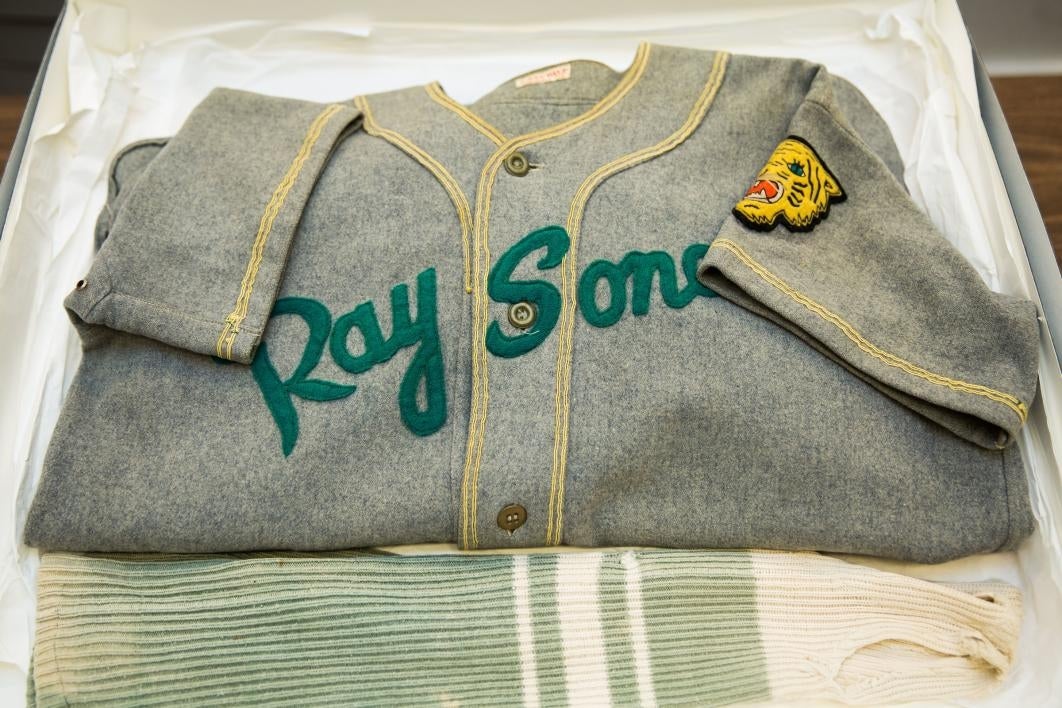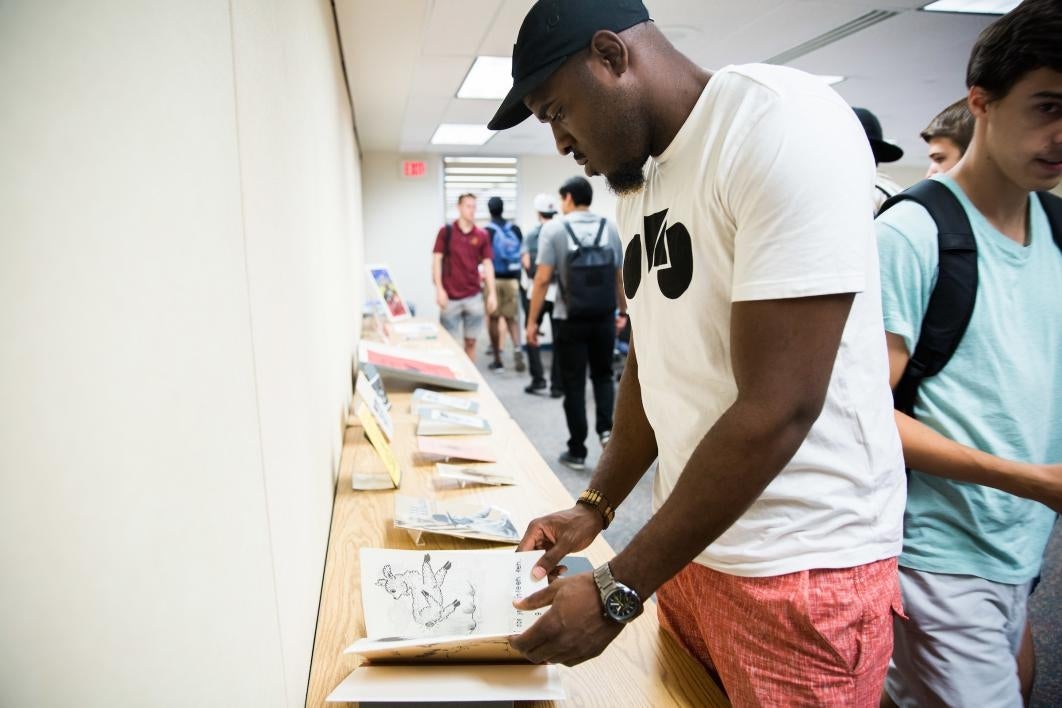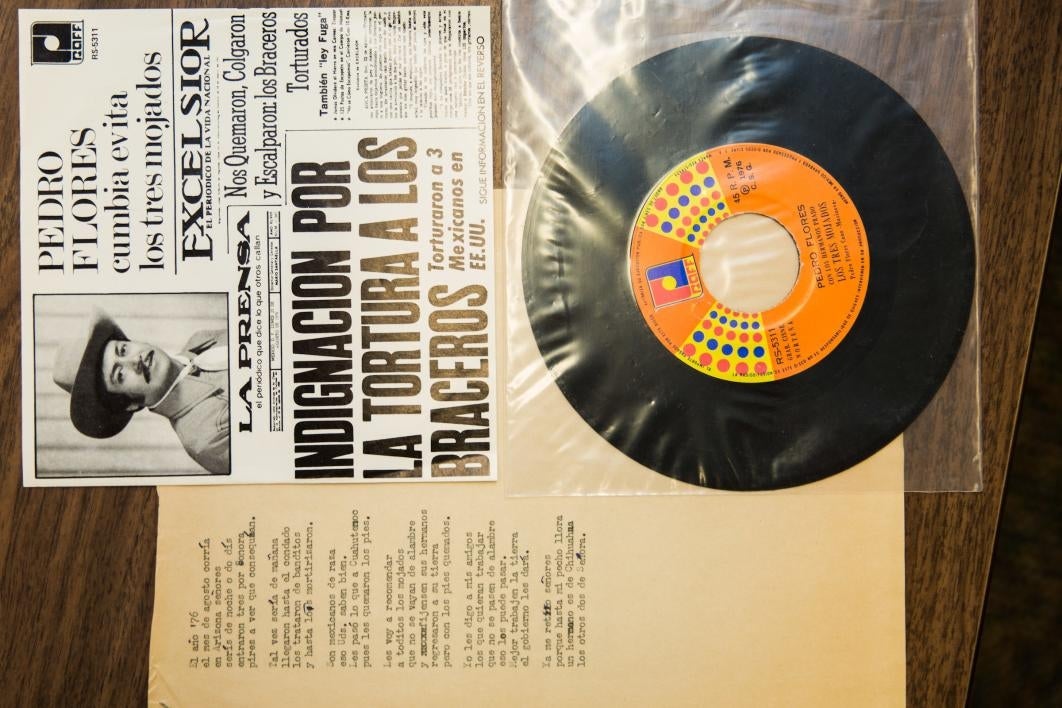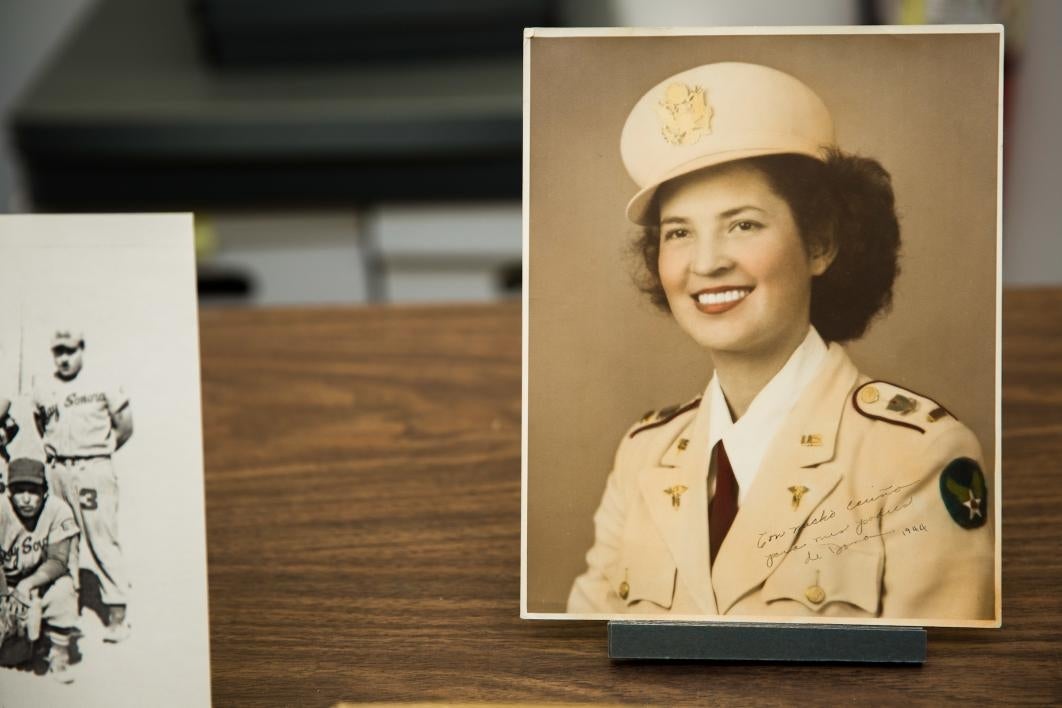ASU awarded Mellon grant to develop community-driven archival collections

In the small border town where she grew up, Nancy Godoy’s library lacked adequate services for Latinos and the Spanish-speaking community, so it wasn’t until she was an adult that she began to learn of the extensive history and influence of Latinos in Arizona.
Now an archivist at ASU Library, Godoy has worked tirelessly to grow its Chicano Research Collection and expand the library’s reach to the Latino community through public outreach that includes educational workshops on preservation of historic materials.
In recognition of that work, Godoy and her colleague Lorrie McAllister were recently awarded a $450,000 grant from the Andrew W. Mellon Foundation for a three-year project designed to build and expand community-driven collections, in an effort to preserve and improve Arizona’s archives and give voice to historically marginalized communities.
“The grant will allow us to continue our work with the Latino community and expand our reach to other historically marginalized communities,” Godoy said. “Latinos, African-Americans, Asian-Americans and the LGBT community share a collective memory and this history needs to be preserved collectively.”
Under her leadership, the project — titled “Engaging, Educating, and Empowering: Developing Community-Driven Archival Collections” — will implement Archives and Preservation Workshops and Digitization and Oral History Days, as well as digitize and make publicly accessible existing archival collections from ASU Library’s Chicano/a Research Collection and Greater Arizona Collection.
In 2012, the Arizona Archives Matrix Project, a statewide initiative to gather data about local archives, identified several historically marginalized communities in Arizona, including LGBT, Asian-American, African-American and the Latino community, which makes up 30 percent of Arizona’s population but is represented in less than 2 percent of known archival collections.
ASU Now sat down with Godoy to get a more candid take on her views about preserving the history of marginalized communities.
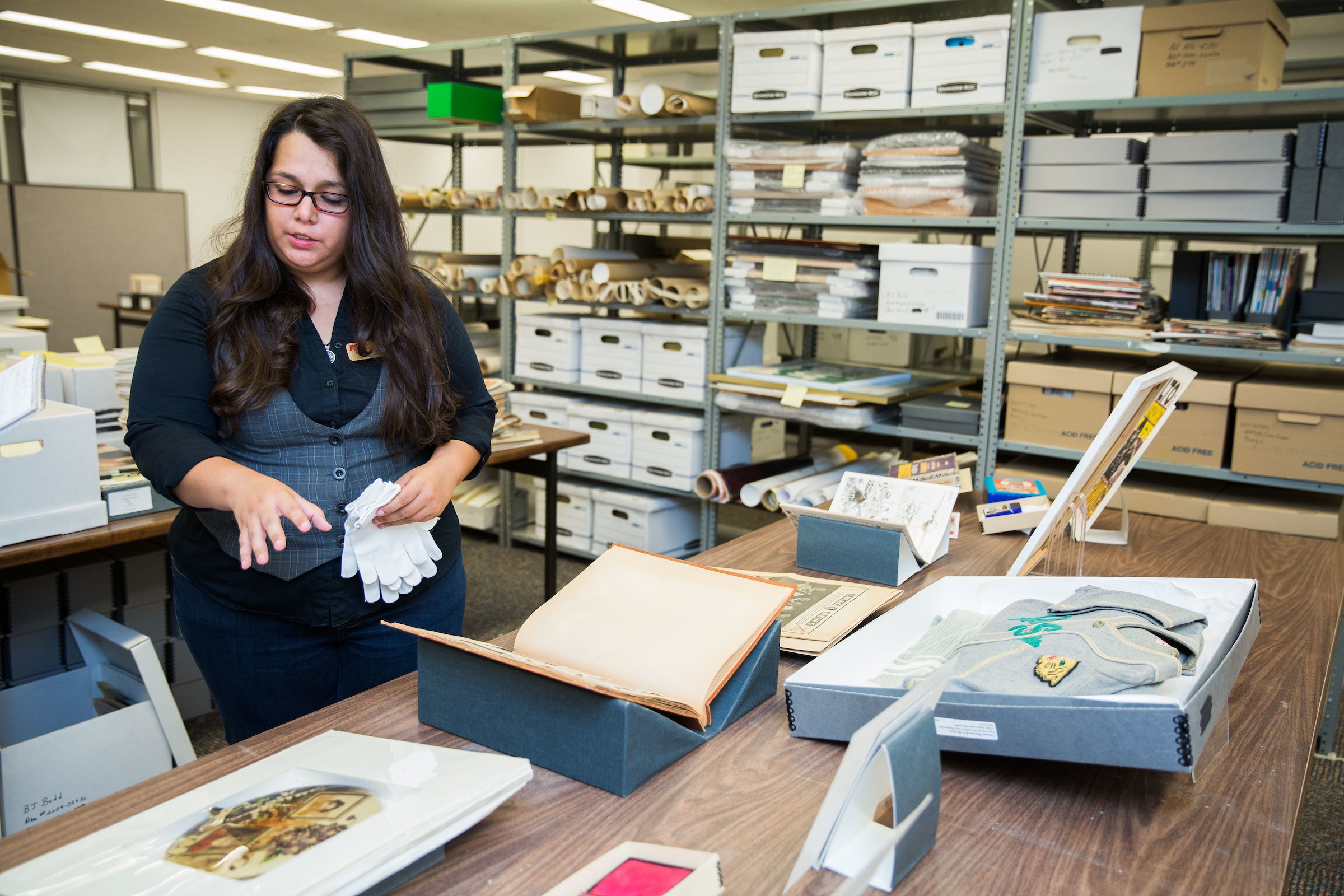
Nancy Godoy talks about various items in the Chicano Research Collection at ASU Library. Photo by Deanna Dent/ASU Now
Question: How did you get into archival work?
Answer: I’ve worked in libraries and archives throughout the state as a student and professional since 2003. I grew up in Yuma, Arizona, and come from a farmworker background. My hometown, at that point in time, didn’t provide adequate library services for Latinos or the Spanish-speaking community so I wasn’t exposed to this world until I was an adult. I received my bachelor’s in history at Northern Arizona University and master’s in library science at University of Arizona. Inspired by Chicano/a history and archival internships, I realized that knowledge transforms lives and everyone should have access to information. Today, as the archivist of the Chicano/a Research Collection at ASU Library, I have dedicated my career to addressing inequities and discrimination within the archive and library field.
Q: What is unique about the work you do for ASU?
A: I love to introduce people to archives, make collections accessible and see communities interact with history. I jokingly refer to this feeling as my “archive glow.” Throughout my career, I have intentionally embedded myself into local communities in order to build the relationships and trust needed to add diverse voices to the archival record. I’ve also used social media, bilingual exhibits and marketing materials, and workshops to reach a larger audience.
Q: Why is this work important?
A: It’s important to note that the Latino community is not fairly represented in mainstream media and history. When we share local history and collections with the public, it allows marginalized communities to reflect and see themselves in a positive way. Multiple perspectives and narratives are needed in order to get an accurate understanding of Arizona history. Marginalized communities have the right to preserve their own archives and should feel invested in ongoing efforts to preserve a more complete representation of local history.
Q: What are some of your favorite items in the collections at ASU Library?
A: I’ve had my dream job the last six years. Each day I come into work, I find something amazing, so it’s not easy to pick one collection or item. The Chicano/a Research Collection is Arizona’s largest repository for Latino history, so we have material on different subjects (civil rights, politics, education, labor, culture and art). Since 1970, we’ve acquired a distinguished collection of manuscripts, photographs, newspapers, ephemera and artifacts. For example, we have the Ocampo Family Papers and Photographs, which highlight the life and customs of a Latino family from 1863 to the present. It’s important to remember that Latinos have deep roots in Arizona and helped build the state’s economy in the mines, fields and ranches.
Q: Do you have any tips for people looking to preserve family historical items?
A: Yes, several! In 2014, I developed an Archives and Preservation WorkshopFor more information on the workshops, contact Nancy Godoy at Nancy.Godoy@asu.edu or 480-965-2594. that encourages the community to preserve their own history by providing three different ways to preserve (genealogy research, archival theory and oral histories). During the archival theory section, community members learn how to appraise, collect, describe and arrange material. For example, if you have original photographs at home on the walls, collect the material, scan it and properly store it as soon as possible because light can weaken the color of the photographs. If you don’t have traditional archival supplies (acid-free box, folders and mylar), you can use temporary storage supplies like plastic bins or Ziploc bags. It’s also very important to identify people, places and dates but not write on the photographs.
Additional reporting by Britt Lewis, ASU Library
Top photo: Various items from the Chicano Research Collection at ASU Library. Photo by Deanna Dent/ASU Now
